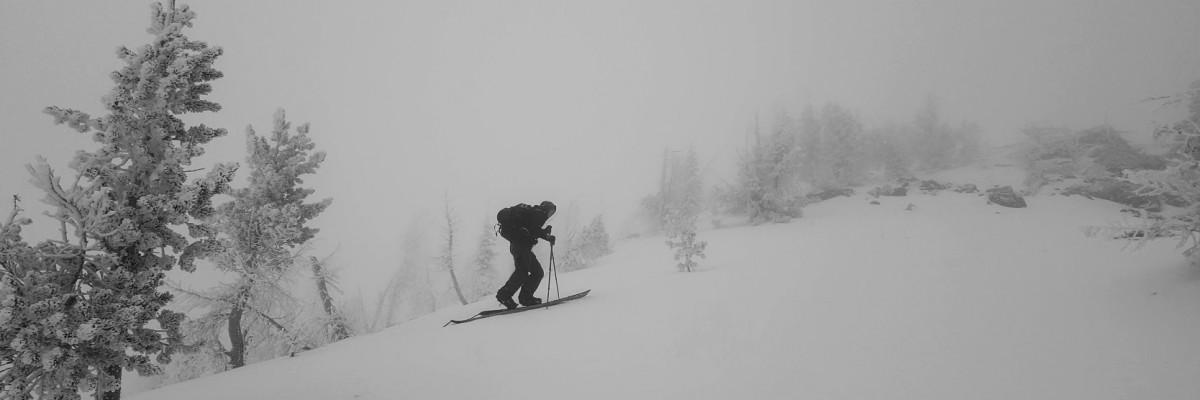The avalanche danger in the west central Montana backcountry is LOW with extra caution in upper elevation wind loaded terrain.
Good morning, this is Jeff Carty with the West Central Montana Avalanche Center’s avalanche advisory for December 15, 2020. This advisory does not apply to operating ski areas, expires at midnight tonight, and is the sole responsibility of the U.S. Forest Service.
Mountain temperatures are 17º to 26º this morning and highs were around 26º at 7000′ in the past 24 hours.
The Snotel sites tell us the mountains received between 0″ and .1″ of snow water equivalent overnight. Tours yesterday revealed 2″ of new snow on the ground at Lolo Pass and Pyramid Peak. The Rattlesnake had slightly more with 3″, and the southern Bitterroot up to 6″.
Winds have been mild the past few days, wind transport was minimal but present at higher elevations. 4″-8″ wind slab was touchy at ridge top on east slopes in the Swans yesterday. These could produce very small windslab avalanches less than D1 in size but could be consequential if they carried a rider over a cliff band or into hazards. Lost Trail saw stronger winds Sunday, and there may be larger wind slabs in that area.
The two weeks of high pressure haven’t done our snowpack any favors, which has shrunk considerably and developed facets throughout the forecast area. Buried surface hoar is found in multiple locations as well. Despite the very poor structure, the current risk from this snowpack is low. Stability tests are producing inconsistent results and showing low propagation likelihood. However, it is a weak and incohesive base for further snow to land on and will likely be an issue as snow accumulates. Facets are slow to heal, and the problem will be with us for a while.
With both snow and moderate winds in the forecast, we will likely see larger wind slabs develop. Whether there will be enough snow to stress existing weak layers and cause deeper failures is yet to be seen. Expect to see the hazard rating increase.
The bottom line:
The existing snowpack has faceted and lost cohesion but presents a low risk of avalanches currently. Further snow load may stress weak layers to the point of failure. Very small wind slabs are possible at high elevation ridge tops. These will increase in size with snow and wind.
Normal caution is called for today. Practice safe travel protocols. Travel one at a time in avalanche terrain, carry a beacon, shovel, and probe, and stay alert for signs of instability. Dig a pit. Look for red flags.
Special Announcements:
Due to COVID-19, the West Central Montana Avalanche Foundation could not host our biggest annual fundraiser in person this year. While we look forward to having an in-person event again in the future, the Pray for Snow online auction is underway and closes today, at 10 PM MST! We will be adding new items throughout the day, so make sure to place your bids accordingly and check back in. All proceeds benefit the West Central Montana Avalanche Center and provide free educational opportunities for all backcountry user groups. Please help us spread the word and show your support by participating HERE
The West Central Montana Avalanche Center (WCMAC) generates avalanche forecasts for a 1420 square mile area. The forecast area stretches from Lost Trail Pass to just north of Seeley Lake, Montana. Our team works hard to keep you informed of current avalanche dangers but, we can’t see everything. Your snowpack and weather observations help us fill in the gaps and produce a more accurate forecast. If you get out, please take a moment to fill out the Missoulaavalanche.org online observation form.
Ski and ride safe.














